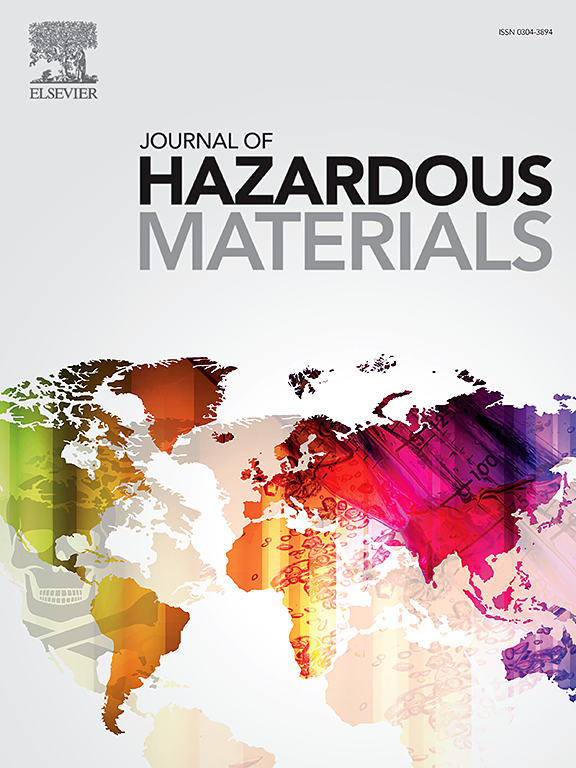弥合时间差距:基于人工智能的双周NH3时间尺度降尺度到具有空间可转移性的日尺度
IF 12.2
1区 环境科学与生态学
Q1 ENGINEERING, ENVIRONMENTAL
引用次数: 0
摘要
氨(NH3)是一种具有重大环境和健康影响的气态污染物。近几十年来,在工业化和农业的推动下,其浓度不断增加,需要高分辨率的监测。然而,有限的每日地面观测妨碍了全面分析。本研究开发了基于机器学习的框架——深度神经网络(DNN)、随机森林和光梯度增强机器——来预测2017-2022年美国各地每两周的NH3浓度,并将其缩小到每日估计。这些模式整合了NH3柱浓度、气象变量、土地覆盖数据、牲畜信息和地面测量数据。其中,DNN模型在空间交叉验证和独立检验中均表现优异,相关系数为0.79,均方根误差为0.98µg/m³,一致性指数为0.83,有效捕获了9 km分辨率下的精细尺度空间变化。Shapley加性解释分析确定了时间动态因素,如一年中的天数和气象变量,以及土地覆盖和牛密度,作为关键的预测因子,突出了该模型支持NH3从双周尺度降至日尺度的能力。当应用于英国时,该模型通过留一站和留一年的交叉验证证明了其空间可转移性的潜力。这些发现强调了机器学习在弥合时间差距和生成高分辨率每日NH3估计方面的能力。本文章由计算机程序翻译,如有差异,请以英文原文为准。

Bridging temporal gaps: AI-based temporal downscaling of biweekly NH3 to daily scale with spatial transferability
Ammonia (NH3) is a gaseous pollutant with significant environmental and health implications. Over recent decades, its increasing concentrations, driven by industrialization and agriculture, have necessitated high-resolution monitoring. However, limited daily ground-based observations hinder comprehensive analysis. This study developed machine learning-based frameworks—deep neural network (DNN), random forest, and light gradient boosting machine—to predict biweekly NH3 concentrations and downscale them to daily estimates across the United States during 2017–2022. The models integrate NH3 column concentrations, meteorological variables, land cover data, livestock information, and ground-based measurements. Among the models, DNN showed superior performance in both spatial cross-validation and independent testing, achieving a correlation coefficient of 0.79, a root mean square error of 0.98 µg/m³, and an index of agreement of 0.83— effectively capturing fine-scale spatial variations at a 9 km resolution. Shapley additive explanations analysis identified temporal dynamic factors—such as day of year and meteorological variables—as key predictors, along with land cover and cattle density, highlighting the model’s ability to support the temporal downscaling of NH3 from biweekly to daily scale. When applied to the UK, the model demonstrated its potential for spatial transferability via the leave-one station-out and leave-one year-out cross validations. These findings highlight the ability of machine learning in bridging temporal gaps and generating high-resolution daily NH3 estimates.
求助全文
通过发布文献求助,成功后即可免费获取论文全文。
去求助
来源期刊

Journal of Hazardous Materials
工程技术-工程:环境
CiteScore
25.40
自引率
5.90%
发文量
3059
审稿时长
58 days
期刊介绍:
The Journal of Hazardous Materials serves as a global platform for promoting cutting-edge research in the field of Environmental Science and Engineering. Our publication features a wide range of articles, including full-length research papers, review articles, and perspectives, with the aim of enhancing our understanding of the dangers and risks associated with various materials concerning public health and the environment. It is important to note that the term "environmental contaminants" refers specifically to substances that pose hazardous effects through contamination, while excluding those that do not have such impacts on the environment or human health. Moreover, we emphasize the distinction between wastes and hazardous materials in order to provide further clarity on the scope of the journal. We have a keen interest in exploring specific compounds and microbial agents that have adverse effects on the environment.
 求助内容:
求助内容: 应助结果提醒方式:
应助结果提醒方式:


